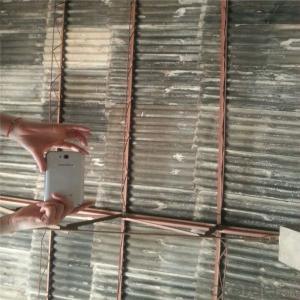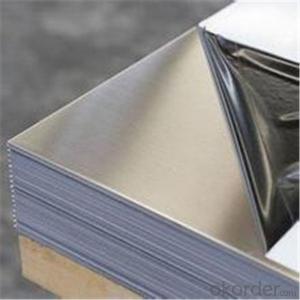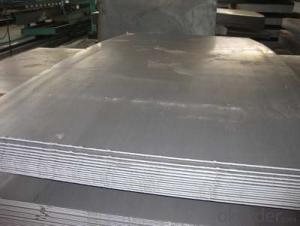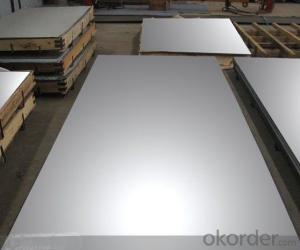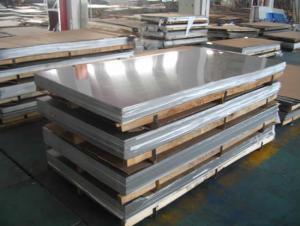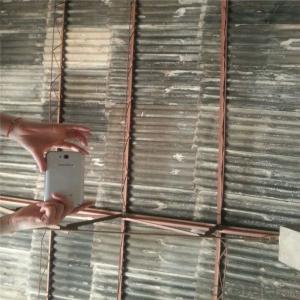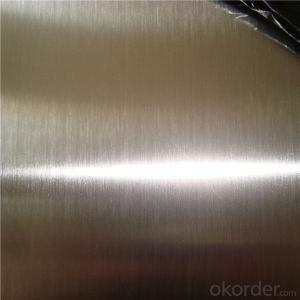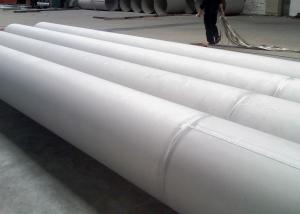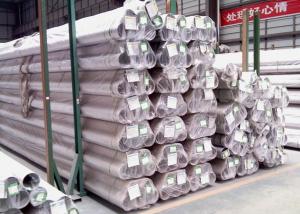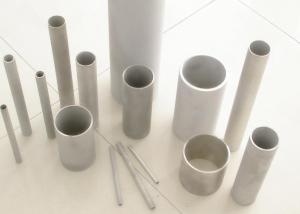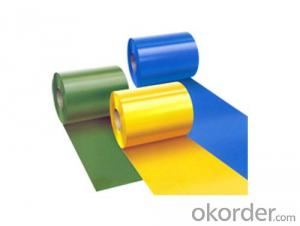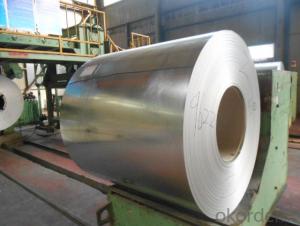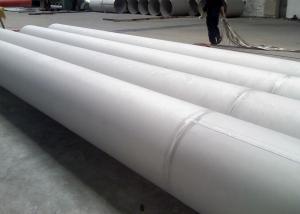Mirror polished Stainless Steel Sheet in Wuxi,China
- Loading Port:
- Shanghai
- Payment Terms:
- TT OR LC
- Min Order Qty:
- 2 m.t.
- Supply Capability:
- 1000 m.t./month
OKorder Service Pledge
OKorder Financial Service
You Might Also Like
Specification
Specifications of Mirror polished stainless steel sheet
| Grade | 300 Series:304 304L 316 316L 309S 310S 317L 347H 321 |
| Standard | ASTM, AISI, DIN, EN, GB, JIS |
| Length | 1500/2000/4000/6000mm |
| Thickness | 0.2-40mm |
| Width | 1219/1250/1500/2000 |
| Original | Tianjin, China (Mainland) |
| Brand Name | BAO STEEL, TISCO, ZPSS |
| Model Number | 304 316 316l |
| Type | Plate, Sheet, Coil |
| Application | Industrial used/decoration |
| Certification | ISO, BV, CE |
| Product name | Tisco 304 316 316l stainless steel sheet |
| Material | 304 316 316l stainless steel sheet |
| Surface | 2B, BA, HL, No.4, No.1, 2D, Sand, mirror polish |
| Technique | Cold Rolled , Hot Rolled |
| Edge | Mill edge or slit edge |
| Mill | TISCO or as request |
| Magnetic | Non-magnetic |
| Alloy | Non-alloy |
| Color | Natural Color |
| Packing | Interleaving Paper |
Chemical Composition
Chemical Composition of Material | |||||
Material Composition | 201 | 202 | 304 | 316L | 430 |
C | ≤0.15 | ≤0.15 | ≤0.08 | ≤0.035 | ≤0.12 |
Si | ≤1.00 | ≤1.00 | ≤1.00 | ≤1.00 | ≤1.00 |
Mn | 5.5-7.5 | 7.5-10 | ≤2.00 | ≤2.00 | ≤1.00 |
P | ≤0.06 | ≤0.06 | ≤0.045 | ≤0.045 | ≤0.040 |
S | ≤0.03 | ≤0.03 | ≤0.030 | ≤0.030 | ≤0.030 |
Cr | 13-15 | 14-17 | 18-20 | 16-18 | 16-18 |
Ni | 0.7-1.1 | 3.5-4.5 | 8-10.5 | 10-14 | |
Mo | 2.0-3.0 | ||||
Our Services
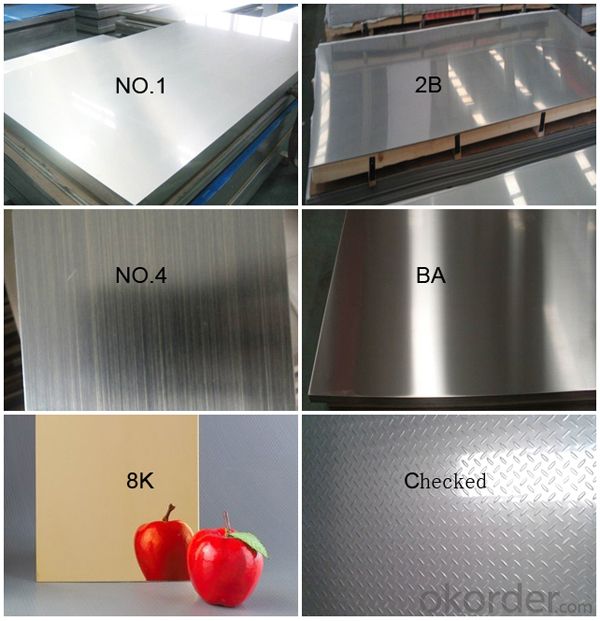
Surface finishes of stainless steel sheet
Finish | Thickness | Characteristics |
No. 1 | 2.0mm ~12.0mm | Surface finished by hot-rolling, annealing and pickling, characterized by white pickled surface. |
2B | 0.3mm ~3.0mm | Finished by heat treatment, pickling after cold rolling, followed by skin pass line to be brighter. |
BA | 0.3mm ~1.5mm | Processed with bright heat treatment after cold rolling. |
No. 4 | 0.4mm ~3.0mm | Polishing with No. 150 to No.180 abrasives. The most popular finishes. |
HL | 0.4mm ~3.0mm | Finished by continuous polishing streaks by using abrasive of suitable grain size. |
SB | 0.4mm ~3.0mm | Polishing with No. 150 to No. 180 Scotch-Brite abrasives. |
3. Production Flow about stainless steel sheet
Raw materials are sending to hot rolling units for rolling into different sizes
Hot rolled material is annealing in cold; rolled annealing furnace and pickling in acid.
All mill rolls are grinded on precision grinding machine with proper chamfering after first shiftoperation.
All sheets are pickled in different tanks and dried on brush roll machine before dispatched.
These sheets are again annealing and are sent to straighten machine for straightening.
Inspections are done at various stages. Keep proper control overall internal process via rolling,annealin and pickling by our experienced staff
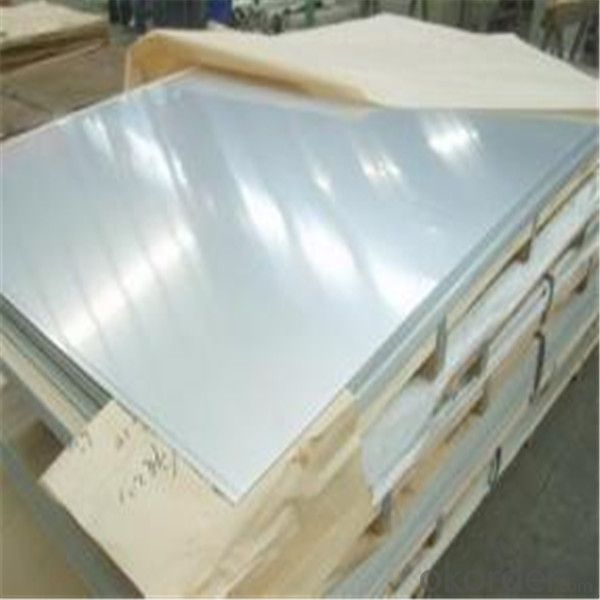
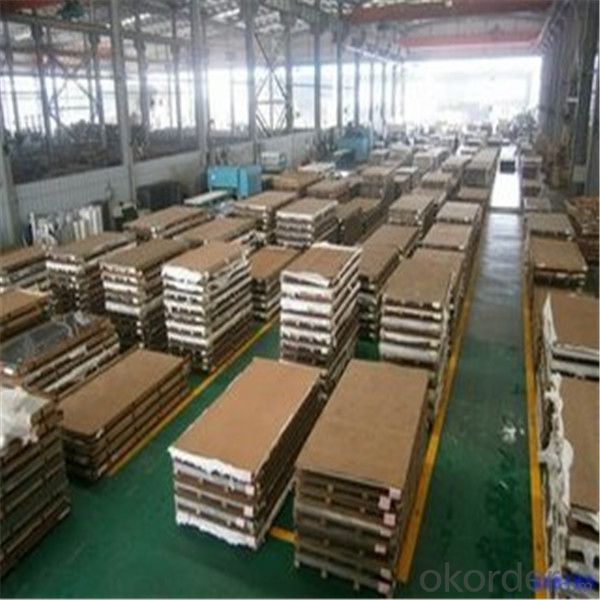
- Q: What's the difference between the 304 stainless steel plate and the 310S stainless steel plate?
- 304 is a versatile stainless steel which is widely used in the manufacture of equipment and parts requiring good overall performance (corrosion resistance and formability). In order to maintain the inherent corrosion resistance of stainless steel, steel must contain more than 18% chromium, more than 8% of the nickel content. 304 stainless steel is a brand of stainless steel produced according to the ASTM standard in the United states.310S stainless steel austenitic chromium nickel stainless steel has good oxidation resistance, corrosion resistance, because the higher percentage of chromium and nickel, which has much better creep strength, can continuously work under high temperature, good heat resistance, softening temperature is more than 800[1], and the allowable stress continued to decrease, the highest use temperature of 1200 DEG C. For Ni (Ni), chromium (Cr) content is high, with good oxidation resistance, corrosion resistance, acid and alkali resistance, high temperature performance, high temperature resistant steel dedicated to the manufacture of electric furnace tube and so on, increase the amount of carbon austenitic stainless steel, due to the solid solution strengthening effect to the strength improved, chemical composition characteristics of austenitic stainless steel is chrome, nickel based addition of molybdenum and tungsten, niobium and titanium elements, as its face centered cubic structure, and strength and high creep strength at high temperature.
- Q: Can stainless steel sheets be cold rolled?
- Indeed, it is possible to cold roll stainless steel sheets. The cold rolling process involves passing a stainless steel sheet through a sequence of rollers at ambient temperature, leading to a decrease in thickness and an augmentation in both hardness and strength. By employing this technique, one can create stainless steel sheets with accurate measurements and impeccable surface textures. Cold rolling is widely utilized in the production of stainless steel sheets, catering to diverse sectors including automotive parts, kitchen devices, and architectural constructions.
- Q: Can stainless steel sheets be used for air conditioning systems?
- Yes, stainless steel sheets can be used for air conditioning systems. Stainless steel is a durable and corrosion-resistant material, making it suitable for use in air conditioning systems where it may be exposed to moisture and varying temperatures. Additionally, stainless steel's high strength-to-weight ratio makes it ideal for constructing components such as ductwork, evaporator coils, and heat exchangers in air conditioning systems.
- Q: Advantages and disadvantages of stainless steel
- Mechanical properties: according to different types of stainless steel, the mechanical properties of different martensitic stainless steel with high strength, hardness, corrosion resistance and is suitable for manufacturing the need of high strength, high wear resistance parts, such as turbine shaft, stainless steel knives, stainless steel bearings, austenitic stainless steel and good plasticity, strength is not too but the high corrosion resistance of stainless steel is the best, very suitable for corrosion resistance and mechanical properties of less demanding situations, such as chemical plants, fertilizer plants, sulfuric acid, hydrochloric acid manufacturers of equipment materials, of course, can also be used for submarines and other military industries, ferrite medium mechanical properties of stainless steel body, but the intensity is not too high. Oxidation resistance, suitable for various industrial furnace parts.
- Q: What do stainless steel 304 industrial surfaces refer to?
- The industrial surface is the ordinary pickling surface, which is treated by the last pickling process. It's the white surface we usually see. The bright surface that we see in our lives is a surface that has been further polished or annealed.
- Q: Can stainless steel sheets be used for wastewater treatment?
- Yes, stainless steel sheets can be used for wastewater treatment. Stainless steel is highly resistant to corrosion and can withstand harsh chemicals and environments, making it an ideal material for wastewater treatment applications. It can be used for constructing tanks, pipes, and other equipment used in the treatment process. Stainless steel sheets are also easy to clean and maintain, reducing the risk of contamination. Additionally, stainless steel is a sustainable material as it can be recycled, making it an environmentally friendly choice for wastewater treatment facilities.
- Q: What are the different types of stainless steel sheet surface patterns available?
- There are several different types of stainless steel sheet surface patterns available, each with its own unique characteristics and aesthetic appeal. Some of the most common patterns include: 1. Brushed: This pattern is achieved by lightly brushing the stainless steel surface with an abrasive material, creating a smooth and uniform texture. It is commonly used in applications where a sleek and modern look is desired. 2. Mirror: This pattern involves polishing the stainless steel surface to a highly reflective finish, resembling a mirror. It is often used in decorative applications where a high level of shine is desired. 3. Satin: Also known as a brushed or hairline finish, this pattern is achieved by applying a fine abrasive material to the stainless steel surface in a linear motion, resulting in a matte appearance. It is commonly used in architectural and kitchen applications. 4. Embossed: This pattern involves imprinting a design or texture onto the stainless steel surface using a patterned roller or press. It can create a variety of decorative effects, such as raised or recessed patterns, and is often used in interior design and automotive applications. 5. Perforated: In this pattern, the stainless steel sheet is punched with a series of small holes in a regular pattern. This allows for enhanced ventilation and drainage capabilities and is commonly used in architectural and industrial applications. 6. Etched: This pattern involves chemically treating the stainless steel surface to create a design or pattern. It can be used to create intricate and detailed designs, making it popular in decorative and artistic applications. These are just a few examples of the different types of stainless steel sheet surface patterns available. The choice of pattern often depends on the desired application, functionality, and visual appeal.
- Q: How do you remove water stains from stainless steel sheets?
- To remove water stains from stainless steel sheets, you can follow these steps: 1. Start by wiping the surface of the stainless steel sheet with a soft, damp cloth to remove any loose dirt or debris. 2. Mix a solution of warm water and mild dish soap in a bucket or bowl. Dip a clean cloth into the soapy water and wring out any excess liquid. 3. Gently rub the cloth over the water stains on the stainless steel sheet. Make sure to go along the grain of the stainless steel to prevent any further damage or scratching. 4. For tougher water stains, you can use a non-abrasive cleaner specifically designed for stainless steel. Apply a small amount of the cleaner to a clean cloth and gently rub it onto the stained areas. 5. Rinse the stainless steel sheet with clean water to remove any soap residue. Use a separate clean cloth or sponge to wipe away any excess water. 6. To prevent future water stains, you can apply a stainless steel cleaner or polish to the surface. Follow the instructions on the product label for the best results. Remember to always test any cleaning solution or product on a small, inconspicuous area of the stainless steel sheet before applying it to the entire surface. This will ensure that the cleaner or polish does not cause any damage or discoloration.
- Q: What is the strain hardening exponent of stainless steel sheets?
- The strain hardening exponent of stainless steel sheets typically ranges from 0.2 to 0.4, depending on the specific grade and manufacturing process.
- Q: What is the maximum thickness of stainless steel sheets for bending?
- Factors such as the type of stainless steel, the bending method, and available equipment determine the maximum thickness for bending stainless steel sheets. Typically, sheets up to 3/16 inch (4.76mm) thick can be easily bent using common techniques and equipment. Nevertheless, thicker sheets may necessitate specialized machinery or processes like hydraulic or press braking to achieve the desired bend. To determine the maximum thickness that can be effectively bent for a specific application, it is crucial to consult with a metal fabrication expert or refer to specific bending guidelines provided by the stainless steel manufacturer.
Send your message to us
Mirror polished Stainless Steel Sheet in Wuxi,China
- Loading Port:
- Shanghai
- Payment Terms:
- TT OR LC
- Min Order Qty:
- 2 m.t.
- Supply Capability:
- 1000 m.t./month
OKorder Service Pledge
OKorder Financial Service
Similar products
Hot products
Hot Searches
Related keywords
